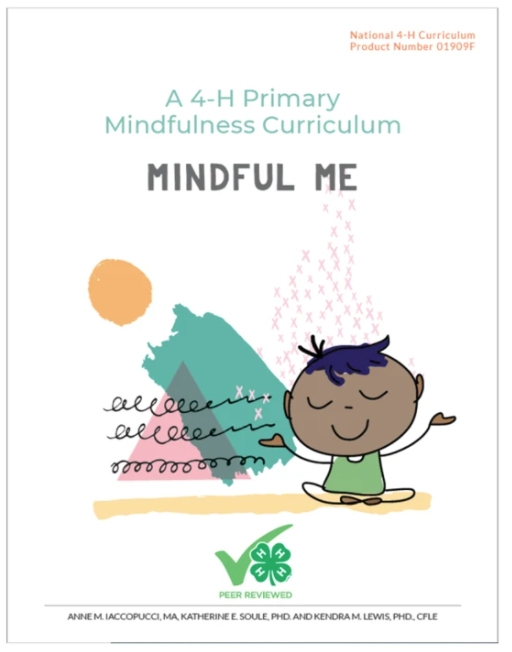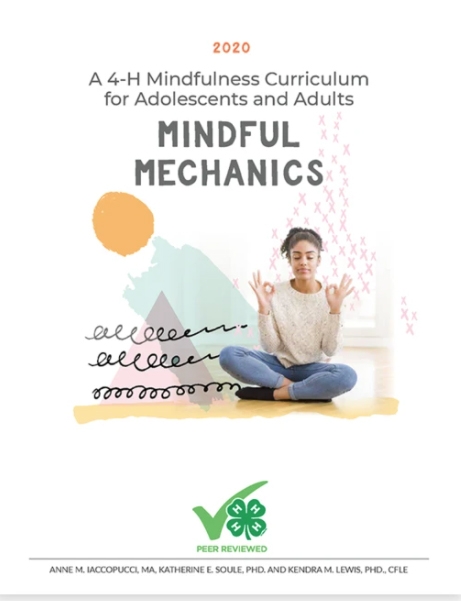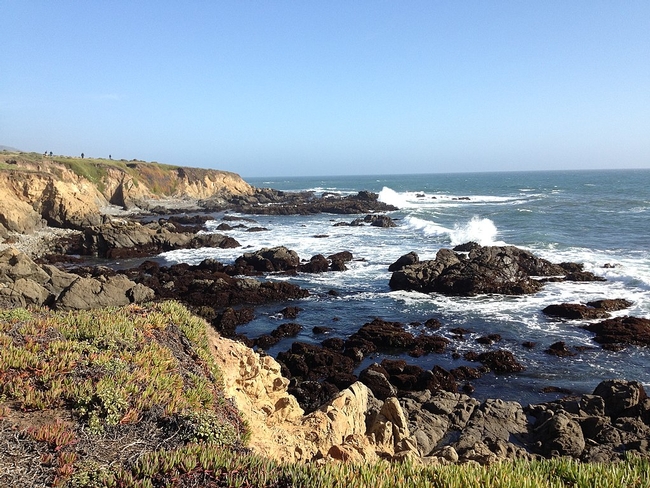4-H adds lessons on mindfulness to promote healthy living

Mindfulness is the practice of paying attention in the present moment and accepting it without judgement. Benefits include reduced stress, better concentration, less depression and anxiety and a stronger immune system.
Even before the pandemic, the UC Cooperative Extension 4-H Healthy Living leadership team – Anne Iaccopucci, UCCE Healthy Living academic coordinator; Dorina Espinoza, youth, families and communities (YFC) advisor in Humboldt and Del Norte counties; and Marcel Horowitz, UCCE healthy youth, families and communities advisor in Yolo County – recognized that youth appeared to be struggling with anxiety and emotional challenges. An examination of published research showed that youth programs were successfully using mindfulness practices to help young people who had developmental challenges or behavioral disturbances.
With mindfulness gaining greater mainstream interest, Iaccopucci joined with YFC advisor Katherine Soule, and University of New Hampshire, Durham, youth and family resiliency state specialist Kendra Lewis to investigate the use of mindfulness for growth and development in people without serious conditions, but struggling with challenges of modern life.
“The 4-H Healthy Living team wanted to make sure we were addressing the social-emotional development of young people, so we investigated how we can integrate mindfulness into our programs,” Iaccopucci said.
Mindfulness retreat
The team designed an annual weekend UC 4-H Mindfulness Retreat for youth and adults to build skills in mindfulness, stress management, relationship building and community connection. Three-day retreats were held over four consecutive years in Cambria, a peaceful beach community on California's Central Coast.
Lessons in yoga, art and nature exploration were combined with quiet reflection, socialization and emotional-regulation training led by experts with extensive knowledge in those mindfulness methods. “Hangout time” was electronics-free; participants were encouraged to spend time getting to know one another or practicing self-reflection.
A survey completed by participants at the end of the retreats helped leaders improve the activity year-to-year and gauge the program's success. Both youths and adults said they were satisfied with their experiences at the retreat, wanted to participate again and would recommend the experience to others, the retreat team reported in the August 2020 issue of the Journal of Extension.
As part of the completion survey, the youths and adults were asked to provide examples of how their new skills and knowledge in mindfulness can be applied in their daily lives, how it can be applied in 4-H, what they liked best and what they would change.
One youth mentioned, “Giving skills back to my 4-H club, or when I am stressed, going back to what I learned.” An adult said, “More present for my family. I will be more mindful in my daily life! Take at least 6 deep breaths in my daily life or day to day.”
One youth said, “I can pass my new knowledge down to the youth in my county or across the state.”
Another youth wrote that the best part was, “Learning how to stay calm and having fun.”
To read the full report on the retreats, see Engaging Teens and Adults in Mindfulness: The University of California 4-H Mindfulness Retreat.
Mindfulness curricula
Hosting a mindfulness retreat is a vast undertaking that may not be practical for individual 4-H clubs or other youth groups. To extend the benefits of mindfulness to more youth across California and the nation, the Healthy Living Team developed curricula that can be used by 4-H clubs and other youth-serving organizations – such as Girl Scouts, Boy Scouts, Boys' and Girls' Clubs, etc.

For example, one lesson focuses on naming and describing feelings. The lesson explains that feelings – such as happy and sad – visit for a time like houseguests, and centers on a book called “Visiting Feelings” by Lauren Rubenstein. The author suggests that feelings should be viewed with “wide open eyes.”
“Is it bright like the sun, dark like the rain, or is it a look you can't even explain?” says the text. “If you listen to what your body can say, you'll find that your feelings are really OK.”
Each lesson includes a connected activity. For naming and describing feelings, the children can choose a feeling to explore, write it down and draw what the feeling looks like – a prickly plant, a bouncy ball, a present?
The curriculum is available on the Shop4-H.org website for $39.95. Videos were created to accompany the curriculum and are available on the eXtension website with the purchase of the curriculum. (Visit https://campus.extension.org/enrol/index.php?id=1839, create and account and use the enrollment code California to view the videos.)

The curriculum is available on the Shop4-H.org website for $39.95.
A three-page 4-H Mindfulness Project guide is available for free download. The guide is designed for 4-H Clubs, but it is useful for any teacher or leader to share the benefits of mindfulness. Some suggested activities include creating a portfolio of favorite places that help the participants feel relaxed, start a gratitude journal to document the things they are grateful for, explore food using all five senses or host a self-reflective nature walk in the local community.
The publication also suggests how youth can develop leadership skills related to the mindfulness project by becoming a Healthy Living Officer, a junior or teen leader for a mindfulness project and plan and prepare a mindfulness exercise for a community club meeting.
To learn more about the 4-H Youth Development program in local communities across California, see http://4h.ucanr.edu/
